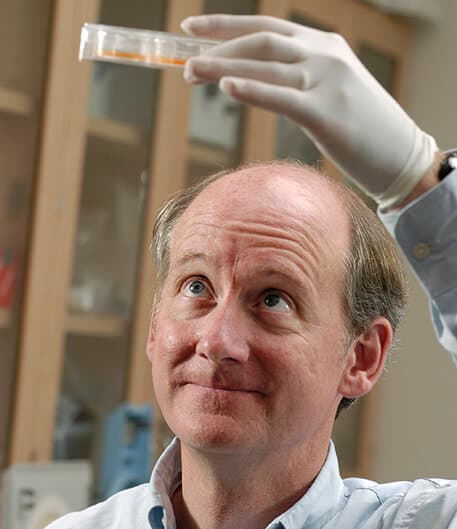James Thomson
Biomedical Breakthroughs
In November 1998, the journal Science published a paper on one of the most important medical discoveries of our time: led by UW–Madison professor James Thomson, a team of scientists had successfully isolated human embryonic stem cells.
The news established the university as a world leader in stem-cell research and regenerative medicine. Embryonic stem cells have the potential to provide rare insight into reproduction and human development, including what causes birth defects and miscarriage. They may be used to grow replacement tissues and develop new drugs. And many people believe they could someday lead to better understanding, and possibly treatment, of some of the worst diseases and disorders humans suffer, such as Parkinson’s, Alzheimer’s, diabetes, or heart disease.

Embryonic stem cells are universal cells — they can either be replicated to make exact copies, or scientists can induce them to become any of the human body’s 220 other cell types: heart cells, blood cells, brain cells, or more.
The stem cells used in Thomson’s research were extracted from embryos left over from infertility treatments and donated with the explicit consent of the patients involved. Nevertheless, the work has sparked controversy, as some argued it was immoral to destroy the embryos, a debate that continues.
Reacting to the politically charged environment, the Wisconsin Alumni Research Foundation established WiCell in 1999 to protect and support the UW’s stem cell research.
In the following decade, UW scientists made even more progress. They guided human embryonic stem cells to become primitive blood cells that later develop into red and white blood cells and platelets; neural cells; and spinal motor neurons. Thomson’s group made headlines again in 2007 when it converted human skin cells into adult pluripotent stem cells, which resemble embryonic stem cells. This development opened the possibility of settling the ethical debate by using these converted cells instead of those derived from embryos.
That same year, the UW Stem Cell and Regenerative Medicine Center was established to support multidisciplinary work in stem cell biology and regenerative medicine.
 13° F
13° F

